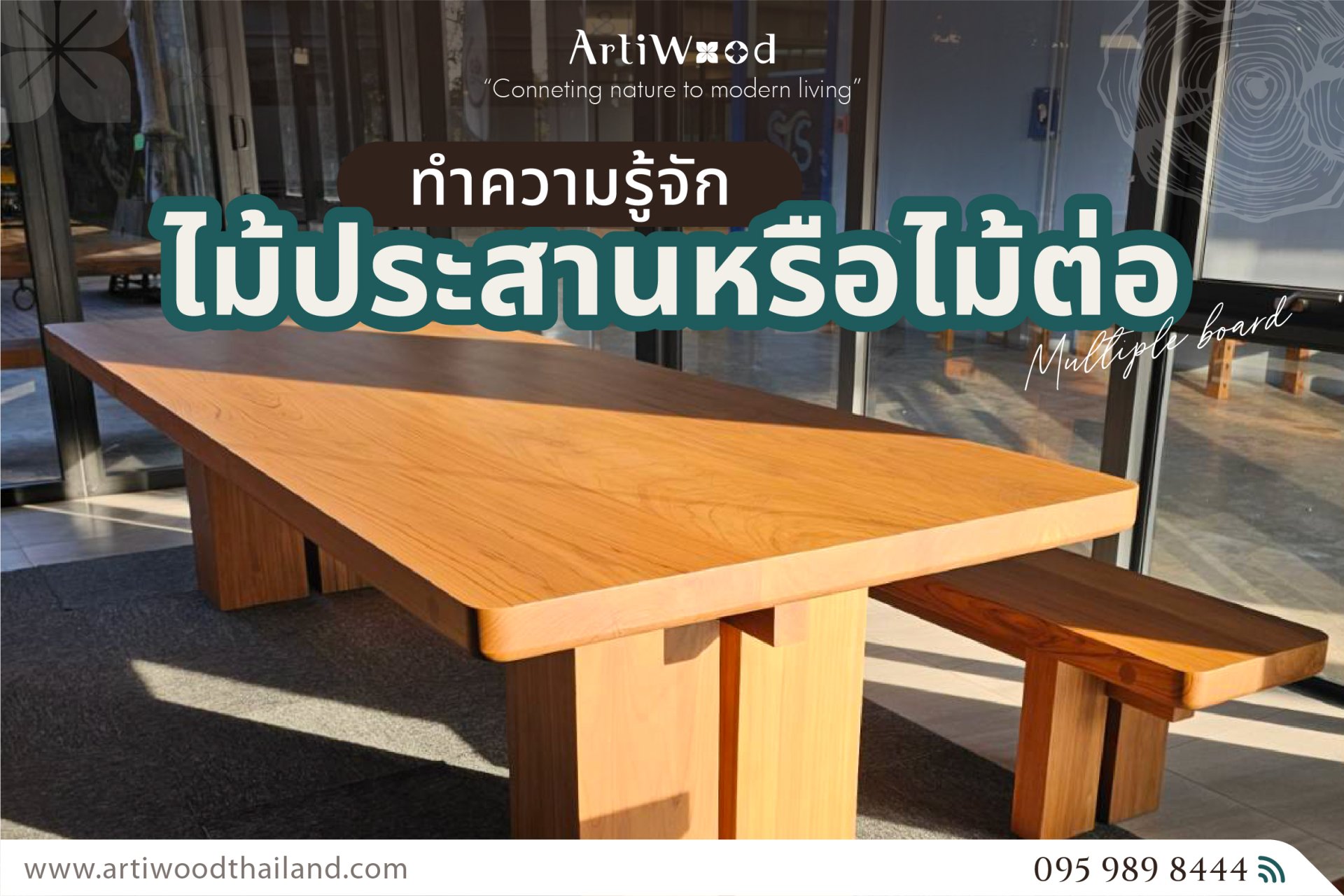Let's get to know about laminated wood and what makes it so special.

Properties of Laminated Wood Tables
Laminated wood tables have many outstanding features such as strength, durability and easier customization compared to single-piece wood. The use of wood-bonding techniques reduces the chances of warping or cracking of the wood because the arrangement of the wood fibers in the alternating direction adds balance and stability to the wood.
In addition, wood-bonding also helps to reduce the use of natural resources sustainably because the pieces of wood can be assembled together instead of relying on the large wood boards alone. This is a significant advantage for those who are concerned about the environment.
Popular materials used in Laminated Wood Tables
Popular woods used for laminating are usually hardwoods such as Teak Wood, Oak, Maple and Ash. These woods have distinctive grains and colors that add beauty and uniqueness to the laminated wood table.
- Teak Wood: Teak is known for its resistance to weather and wood pests. It has beautiful grains and warm colors, making it a popular choice for those who want a table that looks luxurious and will last a long time.
- Oak Wood: Oak is very strong and durable, making it suitable for heavy-duty use. The grain of oak wood has a clear and unique appearance, making it popular in furniture designs that require a distinctive look.
- Maple Wood: Maple wood has a light color and smooth grain. Suitable for making tables that require a simple design but still maintain style.
- Ash wood Ash wood is lightweight but strong. The wood grain is soft and modern. Suitable for those who love modern home decoration.
Production process of laminated wood tables
- Selection of wood The wood to be used must be carefully selected to obtain good quality wood with beautiful patterns.
- Cutting and joining wood The wood pieces will be cut and polished to the appropriate size before being joined together with high-quality wood glue to increase the strength of the wood sheets.
- Drying wood After joining the wood, the wood sheets will be dried to allow the glue to adhere completely and reduce moisture in the wood, which may cause warping in the future.
- Sanding and coating the surface The wood sheets will be sanded smooth and coated with oil or wood coating to enhance beauty and prevent scratches.
- Installing the table legs The table legs will be installed according to the customer's requirements, which can choose from a variety of materials, such as wood, metal or steel.
Maintenance of laminated wood tables
In order for laminated wood tables to have a long service life, they should be properly maintained, such as:
- Avoid humidity and high heat. The table should be placed in a place away from moisture and direct sunlight to prevent warping and cracking of the wood.
- Clean regularly. Use a soft cloth to wipe dust and dirt off the table surface and avoid using corrosive chemicals.
- Wood maintenance Apply wood oil or wood sealant every 6-12 months to maintain the shine and prevent scratches.
Current popularity and usage
Laminated wood tables or jointed wood tables are very popular in the interior design industry because they can be designed to match various styles, whether modern, classic or loft style. Laminated wood tables are also suitable for use in homes, offices and restaurants. With beauty and strength that meet the needs of use in all situations
Laminated wood tables are an excellent choice for those looking for strong, beautiful and sustainable furniture. With a variety of properties, from materials used, production techniques to maintenance, laminated wood tables are suitable for all needs and continue to be popular in the interior design and decoration industry. If anyone is interested in laminated wood tables, Artiwood has customers to choose from wood textures, table edges and legs, which customers can customize according to their needs.







